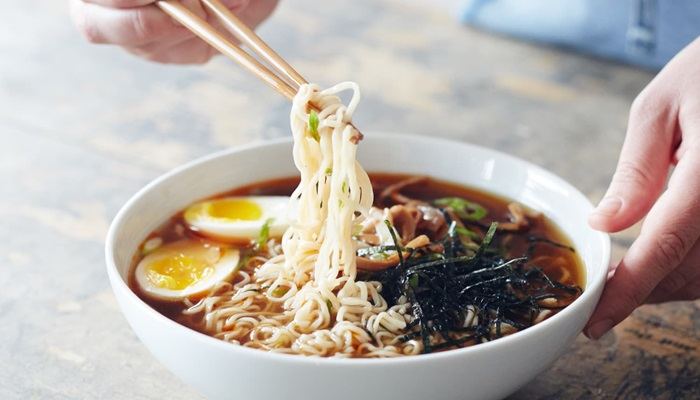Chinese ramen noodles, a beloved dish that has captivated taste buds around the world, offer a unique blend of flavors and textures. Originating from China but influenced by Japanese ramen, this dish is a testament to culinary fusion. Today, we invite you on a journey to learn how to cook authentic Chinese ramen noodles, exploring its cultural significance and providing detailed instructions for an unforgettable dining experience.
The Cultural Significance
A Culinary Bridge
Chinese ramen noodles serve as a bridge between different cultures. While rooted in Chinese noodle traditions, it incorporates elements from Japanese cuisine, creating a harmonious blend of flavors. This dish reflects the exchange of culinary ideas along trade routes and the adaptability of traditional recipes.
Symbol of Comfort
In Chinese culture, noodles symbolize longevity and prosperity. They are often served during celebrations and special occasions. Chinese ramen noodles provide comfort and warmth, making them a go-to meal for many families. Each bowl tells a story of tradition and innovation, inviting diners to savor both the past and present.
Essential Ingredients
Preparing Your Kitchen
To cook authentic Chinese ramen noodles, gather the following ingredients:
Noodles: Fresh or dried ramen noodles, preferably alkaline noodles for their distinctive texture.
Broth Base: Chicken or pork broth for a rich foundation.
Aromatics: Fresh ginger, garlic, and green onions to build flavor.
Spices: Star anise, cinnamon, cloves, and Sichuan peppercorns for depth.
Proteins: Braised pork belly (char siu), chicken slices, or tofu for heartiness.
Vegetables: Bok choy, spinach, or mushrooms for freshness.
Condiments: Soy sauce, hoisin sauce, chili oil, and sesame oil for seasoning.
Eggs: Soft-boiled eggs for a creamy touch.
Toppings: Nori sheets, bamboo shoots, or corn for added texture.
Prepping Ahead
Before starting, prepare all ingredients. Slice meats, chop vegetables, and measure out spices. Having everything ready ensures a smooth cooking process and enhances the final result.
Step-by-Step Cooking Process
Building the Broth
Heat Oil: Start by heating oil in a large pot over medium heat.
Sauté Aromatics: Add minced ginger and garlic, followed by sliced green onions. Stir until they become fragrant.
Add Spices: Introduce star anise, cinnamon, cloves, and Sichuan peppercorns. Let these spices simmer for a few minutes to release their aromas.
Pour Broth: Pour in chicken or pork broth, bringing it to a boil. Reduce the heat and let it simmer for at least 30 minutes. This slow-cooking process extracts the flavors from the spices, creating a rich and aromatic base.
Preparing the Noodles
Cook Noodles: Boil fresh or dried ramen noodles according to package instructions. Fresh noodles typically take less time than dried ones. Drain the noodles and rinse with cold water to stop the cooking process.
Set Aside: Keep the cooked noodles aside while preparing other components.
Cooking Proteins and Vegetables
Braise Pork Belly: In a separate pan, braise pork belly with soy sauce, sugar, and hoisin sauce until tender. Alternatively, use pre-cooked char siu.
Boil Eggs: Soft-boil eggs for about 6 minutes. Peel and halve them for serving.
Blanch Vegetables: Quickly blanch bok choy or spinach in boiling water until just tender. Drain and set aside.
Assembling the Bowl
Prepare Serving Bowls: Ladle the hot broth into serving bowls.
Add Noodles: Place the cooked noodles in each bowl, ensuring they are submerged in the broth.
Layer Ingredients: Arrange braised pork belly, soft-boiled eggs, and blanched vegetables on top of the noodles.
Season and Garnish: Drizzle with soy sauce, hoisin sauce, chili oil, and sesame oil. Sprinkle with chopped green onions and nori sheets for garnish.
Enhancing the Experience
Serving Suggestions
Serve your Chinese ramen noodles immediately for the best experience. The combination of warm broth, tender noodles, flavorful proteins, and fresh vegetables creates a comforting and satisfying meal.
Side Dishes
Consider serving side dishes that complement the flavors of the ramen. Steamed dumplings, fried rice, or a simple salad can enhance the dining experience. These additions provide a balance of textures and flavors, making each bite more enjoyable.
Drinks Pairing
Choose drinks that pair well with the richness of the ramen. A cold beer, chilled tea, or a refreshing glass of lemonade can help cool down the palate. Herbal teas like jasmine or mint also offer a soothing contrast to the savory flavors of the dish.
Conclusion
In conclusion, cooking Chinese ramen noodles is not just about preparing a meal; it’s about embracing a rich culinary tradition. By gathering the right ingredients, carefully building the broth, preparing the noodles, cooking proteins and vegetables, and assembling the bowl, you can create a dish that tells a story of cultural fusion and shared experiences.
Each step of the process, from prepping ingredients to finishing touches, contributes to the final result—a flavorful and aromatic ramen that delights the senses. Serve it with care, paired with complementary sides and drinks, and you have a meal that brings people together, fostering connections and shared moments.
Through this recipe, you not only learn how to cook a delicious dish but also gain insight into the cultural significance behind it. So, gather your ingredients, roll up your sleeves, and embark on this culinary adventure. Enjoy the journey of flavors and the joy of sharing a meal with loved ones. Happy cooking!
By mastering the art of Chinese ramen noodles, you open a door to a world of flavors and traditions. Whether enjoyed as a comforting meal or a festive dish, this ramen offers a taste of history and innovation, inviting everyone to savor the beauty of culinary heritage.
Related topics:
- How to Cook Pork Curry Chinese Style: A Flavorful and Spicy Delight
- How to Cook Mayflower Curry
- Quick & Easy Chinese Rice Recipe: By Food In 5 Minutes

